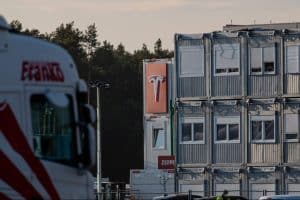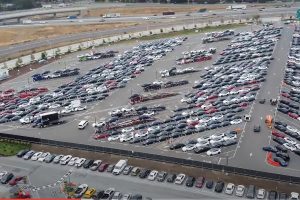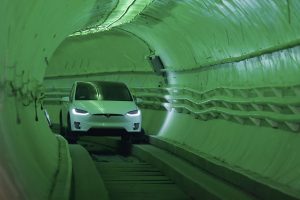- 🚗 Tesla is addressing congestion at its Superchargers in NYC caused by Uber and Lyft.
- 📄 Active Supercharger Congestion Fees have replaced idle fees to reduce wait times.
- 🌐 Congestion fees apply when Supercharger is busy and vehicle charge is above a certain level.
- 🚖 Over 9,000 Lyft and Uber vehicles applied for licenses in NYC, causing concerns about congestion.
- 🔌 Limited charging stations in the city, some operated by Revel, leading to infrastructure challenges.
- 💡 Tesla introduced congestion fees last year, triggered when vehicles charge over 80 percent.
- 🌍 Growing pains in NYC’s EV adoption due to demand outpacing infrastructure availability.
- ⚡ Revel expanding EV chargers to address the surge in demand for charging.
- 🚙 City and TLC working to increase charging infrastructure with federal funding and new facilities.
- 💬 TLC Commissioner emphasizes the need for more charging infrastructure to support EVs in the city.
The electric vehicle revolution is undeniably underway, but with progress comes challenges. In the bustling streets of New York City, Tesla is at the forefront of combating congestion issues at its Supercharger stations, particularly those caused by ride-sharing giants Uber and Lyft.
Understanding the Congestion Challenge
- Tesla’s Proactive Approach
- Tesla has identified a surge in congestion at its Supercharger stations, especially in locations like Brooklyn and Queens.
- To address this, the company has implemented Active Supercharger Congestion Fees, replacing idle fees in a strategic move to reduce wait times.
- How Congestion Fees Work
- The new fees come into play when a Supercharger is busy and a vehicle’s charge exceeds a specified level.
- Tesla communicates this change to drivers, emphasizing the aim to minimize wait times and ensure fair access to Superchargers.
The Root Causes: Uber, Lyft, and Infrastructure Challenges
- Ride-Sharing Boom in NYC
- The number of Lyft and Uber vehicles seeking licenses in NYC exceeded 9,000 last year, raising concerns about increased congestion.
- The Taxi and Limousine Commission (TLC) eliminated the license cap for electric or handicap-accessible vehicles, contributing to the influx.
- Limited Charging Infrastructure
- Infrastructure challenges exacerbate the situation, with a limited number of charging stations available in the city.
- Some charging stations are operated by Revel, a ride-sharing service, further complicating the charging landscape.
Tesla’s Strategic Measures and Beyond
- Tesla’s Congestion Fee Implementation
- Tesla introduced congestion fees last year, triggered when a vehicle’s charge surpasses 80 percent.
- This measure aims to keep Supercharger lines moving efficiently during peak times.
- Revel’s Expansion
- Ride-sharing service Revel is actively expanding its network of EV chargers across NYC to meet the growing demand.
- Superhubs, a part of the Green Rides initiative, have seen increased utilization, indicating a positive response.
- City and TLC Collaboration
- The TLC and the City of New York recognize the need for enhanced charging infrastructure.
- Efforts include federal funding for a charging depot in the Bronx, 30 fast-chargers at TLC’s Woodside facility, and 13 municipal parking facilities with charging stations.
Looking Ahead: Challenges and Solutions
- Growing Pains in EV Adoption
- NYC is experiencing growing pains in EV adoption, with demand outpacing the availability of charging infrastructure.
- The transitional phase towards a 100 percent zero-emissions fleet requires careful planning and execution.
- Commissioner’s Perspective
- TLC Commissioner David Do highlights the urgency to match infrastructure with the surging demand for EVs.
- Initiatives include offering TLC drivers the option of owning EV plates, contributing to the city’s cleaner and more sustainable future.
Conclusion: A Roadmap for Sustainable EV Growth
In the heart of New York City, Tesla’s battle against congestion reflects the broader challenges faced in the rapid adoption of electric vehicles. As ride-sharing services and EV ownership continue to rise, strategic measures, collaborative efforts, and innovative solutions will pave the way for a sustainable and congestion-free electric future.





